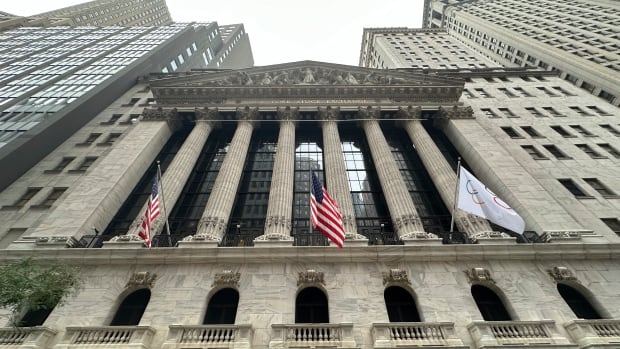U.S. stocks are bouncing back, and calm is returning to Wall Street after Japan’s market soared earlier Tuesday to claw back much of the losses from its worst day since 1987.
The S&P 500 was rallying by 1.6 per cent in midday trading and on track to break a brutal three-day losing streak. It had tumbled a bit more than six per cent after several weaker-than-expected reports raised worries the Federal Reserve had pressed the brakes too hard for too long on the U.S. economy through high interest rates in order to beat inflation.
The Dow Jones industrial average was up 480 points, or 1.2 per cent, as of 11 a.m. ET, and the Nasdaq composite was 1.7 per cent higher.
The vast majority of stocks were climbing in a mirror opposite of the day before — from smaller companies that need U.S. households to keep spending to huge multinationals more dependent on the global economy.
Meanwhile, the TSX was down 1.65 per cent midday on Tuesday when markets opened. Canada’s main stock index was closed on Monday for the bank holiday, and on Friday, it closed down 2.1 per cent, its steepest daily drop since mid-February.
“Canadian stocks didn’t go down yesterday because the market was closed [and] now they’re catching up. There’ll be a big gap down this morning to adjust for that,” said Colin Cieszynski, chief market strategist at SIA Wealth Management.
Stronger-than-expected profit reports from several big U.S. companies helped support the market. Kenvue, the company behind Tylenol and Band-Aids, jumped 12.7 per cent after reporting stronger profit than expected thanks in part to higher prices for its products. Uber rolled 7.9 per cent higher after easily topping profit forecasts for the latest quarter.
Caterpillar veered from an early loss to a gain of 3.8 per cent after reporting stronger earnings than expected but weaker revenue.
CBC’S Scott Peterson looks at the volatility that roiled U.S. markets on Monday — and how markets are reacting early Tuesday.
Several technical factors may have accelerated the recent swoon for markets, beyond the weak U.S. hiring data and other reports, in what strategists at Barclays call “a perfect storm” for causing extreme market moves.
One is centred in Tokyo, where a favourite trade for hedge funds and other investors began unraveling last week after the Bank of Japan made borrowing more expensive by raising interest rates above virtually zero.
That scrambled trades where investors had borrowed Japanese yen at low cost and invested it elsewhere around the world. The resulting exits from those trades may have helped accelerate the declines for markets around the world.
Japan’s Nikkei 225 jumped 10.2 per cent on Tuesday to claw back much of its 12.4 per cent sell-off the day before, which was its worst since the Black Monday crash of 1987. Stocks in Tokyo rebounded as the value of…
Read More: Calm returns to Wall Street as U.S. stocks hold steady during early trading




